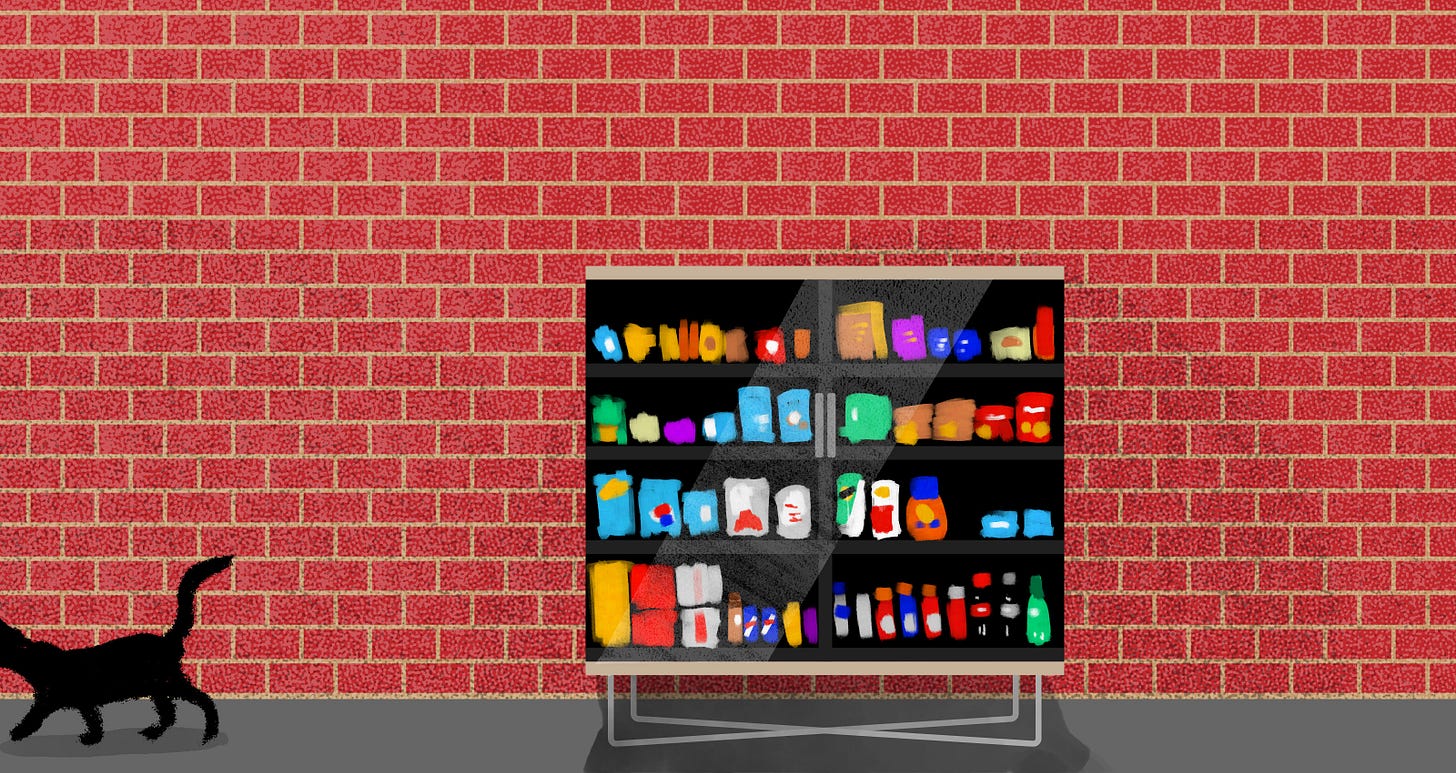This past week, I had a 1:1 with Dylan Field, CEO of Figma, an interface design tool.
Just kidding.
He did chat with the South Park Commons community. My camera happened to be above his and thought it’d be funny to snag a photo.
Figma’s beginnings 📐
New things I learned — about Dylan & Figma.
He likes Cryptopunks
Even 40+ years from now, Dylan would choose to work on Figma over & over again #dedication
The early days of Figma started with memes
Yes, memes. I asked him something along the lines of: “In the early days, how did you find conviction?”
Apparently, Dylan and his co-founder Evan bet that WebGL (a way to render 2D & 3D graphics on the web browser) was the future. But, conviction for the application of WebGL was harder to come by.
They first applied it to memes (then Dylan asked himself: “Did I really drop out of college to make memes?”)
Then to photography.
Then to photoshop.
Then to interface design. Voila, Figma. (Of course, probably more of a maze and less linear than I describe it. Startup life is a journey.)
Confession 🤫
When Figma first came out, I was bearish. I used Sketch, loved the product and thought they reinvented photoshop for designers in a profound way. No way another startup could beat them.
Then we used Figma at work - all designers at LinkedIn switched to Figma from Sketch + Invision.
I was blown away! It was easy for me to move over to Figma because it was basically a copy paste of Sketch functionality plus one thing that was done superbly well: collaboration, made possible by the power of WebGL.
Why now? ⏰
Despite an incumbent, Figma won because their “why now” was strong with WebGL.
As a (former?!) product manager, I’m trained to identify a problem, draw hypotheses for a solution, build & iterate. It’s a tried & true framework and what’s engrained in many a Silicon Valley-er (myself included) for building great products.
As a founder, I’m realizing the “Why now?” question is more important to nail first.
Borrowing from Elad & Avichal, why now’s can include:
New technology. Creates completely new services that would have not existed before or could reduce costs to create. e.g. WebGL for Figma, crypto for NFTs, GPS enabling Foursquare or social/local services, the Internet!, mobile phones!
New regulations. These can be supply-side, where regulations allow you to deliver your offering, or demand-side, where regulations spur demand. e.g. Obamacare for health innovations, Prop 22 for gig worker benefits
New and accepted business models. Opens up new solutions & use cases that couldn’t have existed otherwise. e.g. ad models allowed free content, membership subscriptions to own an audience over ads platforms for creators
New distribution channels. Creates new acquisition channels for rapid growth and being first to market. e.g. Facebook ads in the early days for Zynga virality, SEO growth for Yelp, Clubhouse for event management platforms
Shift in consumer behavior. A departure in behavior creates wider adoption and a market for new businesses. e.g. generational usage of social media & tech, Gen Z for more eco-friendly commerce. One caveat: it’s important to make sure the behavior change is real otherwise you’re betting on a fake future.
New source of customers or demand appears. You want to make sure your market is “big enough” so you don’t come in too early. e.g. credit card penetration hits high enough in emerging markets for any startup to enter the market
Flip this, why now’s also kill businesses (eeek!)
Examples: Chinese governments regulating non-Chinese apps, cloud storage rendering hard drives/CDs/USBs obsolete, pandemic killing travel startups.

But, important to think about the “why now” of “failed startups". Look back 10 years and analyze if something significantly has changed such that that “failed idea” could work today (Webvan vs. Instacart).
“There are no bad ideas. There are only early ideas… They’ll all happen. I’ve become convinced...Every smart person that comes in here with a crazy idea, it’s all going to happen at some point. They will all happen. It’s just a question of when.” -Marc Andreessen
De-risking a risky thing 📉
Great companies can be born even without a strong answer to “why now.” But, time to market & growth may be slower.
How does “why now” de-risk?
Forces you to understand market structures or limiting technologies that prevented anyone else from trying it in the past (vs. learning about it only when you start building your product and testing)
Immediately gives you your competitive advantage
Makes it easier to raise funding (investors will 100% ask this!)
Creates hype meaning free marketing. If the change is significant, other people are probably writing about it or doing the marketing for you. Just ride the hype wave.
Prevents incumbents from copying you immediately. A new, emerging trend is perceived a risky bet & likely difficult to build quickly (hence high cost to merit resources). By the time incumbents might decide to work on it, you would have already built, iterated, & gone to market, enough that you could be a good acquisition target.
Validates that your idea is in a growing market. You’ll be one of the first to dictate the market’s future.
“Why now” your life/career 💼
If you’re deciding to make a career switch, think about the “why now”s of your decision. When “why now”-ing your life (yes I made it a verb), there are two types to consider:
Why now, not earlier? In other words, what are you waiting for? Force yourself to really think about the excuses you’re making for pushing your decision out.
What’s the biggest risk? What do you need to believe to de-risk it?
Are you working on a project that excites you?
Are you waiting to learn something that you can’t learn elsewhere?
Why now, not later? This helps you create conviction in your decision of making the jump now vs. later. If you have a lot of strong answers to this question, you should probably make the jump.
Will continuing to stay make it harder for you to leave? Will it be more of a risk not taking this “risk” than it will be waiting?
Is there something about your current life situation that makes it easier for you to make the jump now vs. later?
Are you eager to learn something that you can’t learn in your current position? Have you staggered in growth?
When I jumped from LinkedIn corporate -> full-time founder here were my answers:
Why now, not earlier?
I wanted an awesome co-founder and a general problem space I was excited about.
I wanted my big project out to be a success with or without me.
I needed personal runway and my visa situation squared away.
Why now, not later?
Golden handcuffs - staying at a comfortable job was really nice! Too nice that the longer I stayed, the harder it was going to be leave.
I’m relatively young and have fewer obligations that could change my psychology of leaving.
I felt like I needed to quicken my cycles of learning and a startup was going to help me achieve that.
And, here I am!
Nudges of the week 👀
Going to re-nudge the “why now” articles above.




